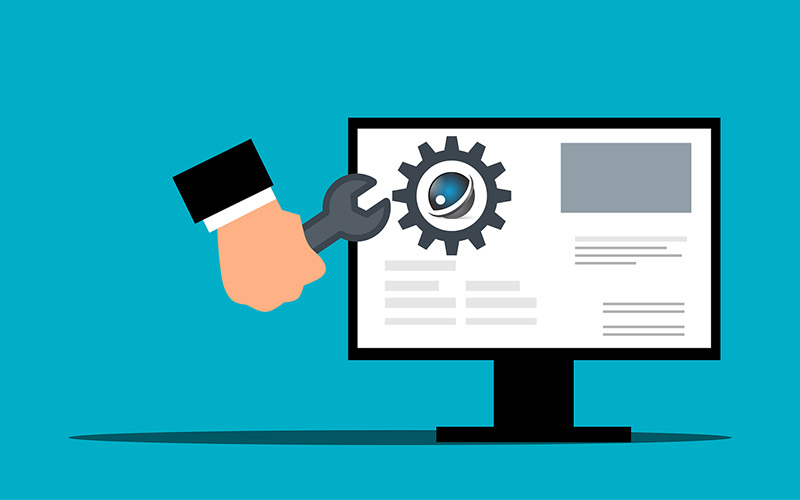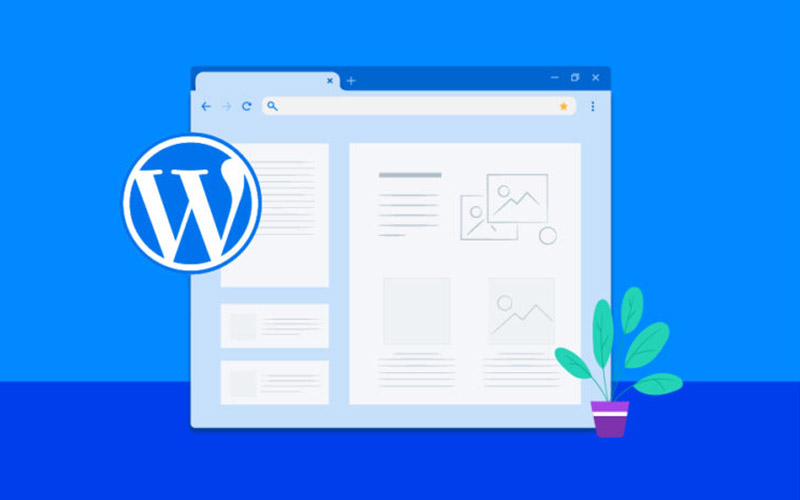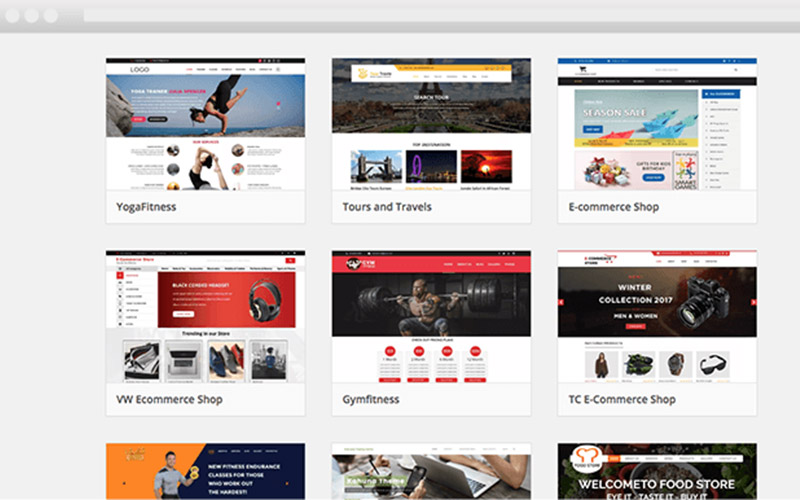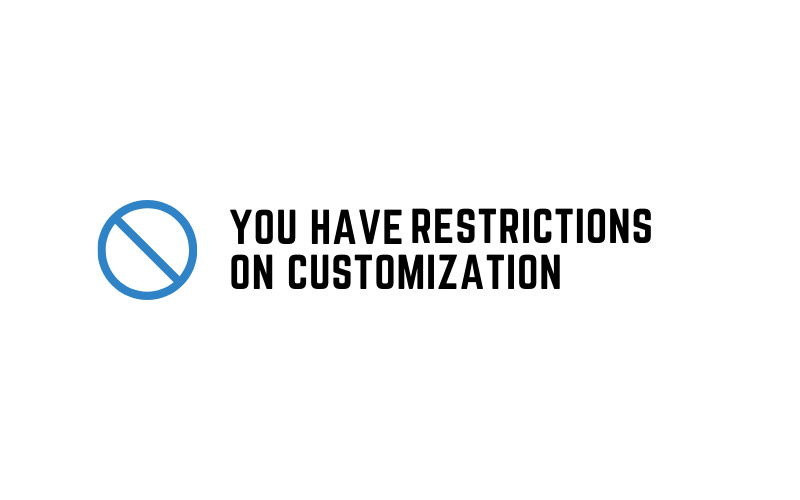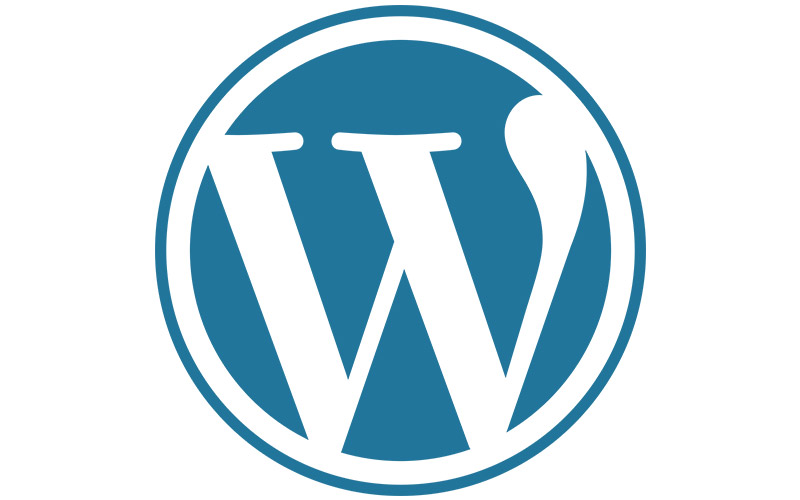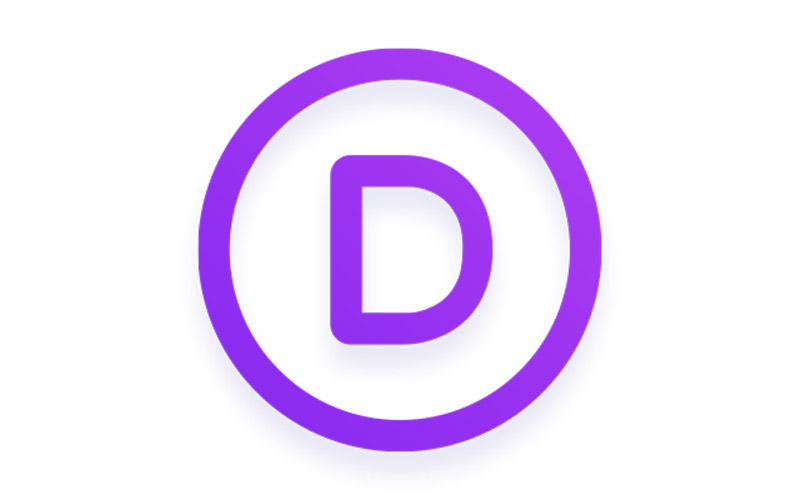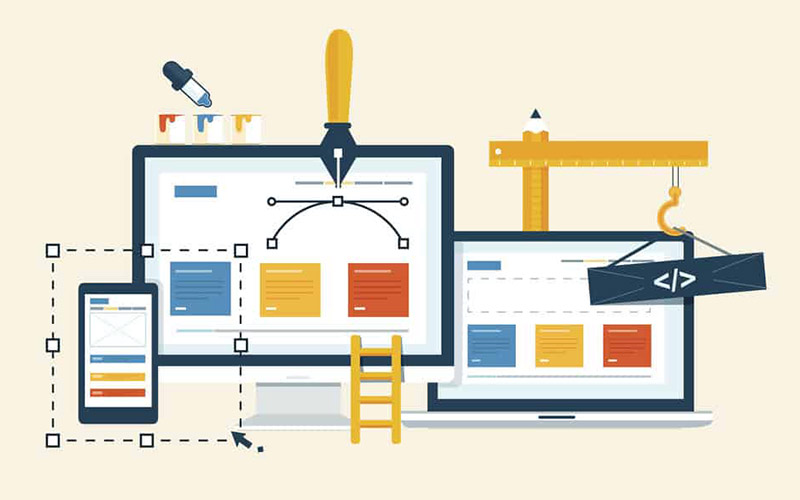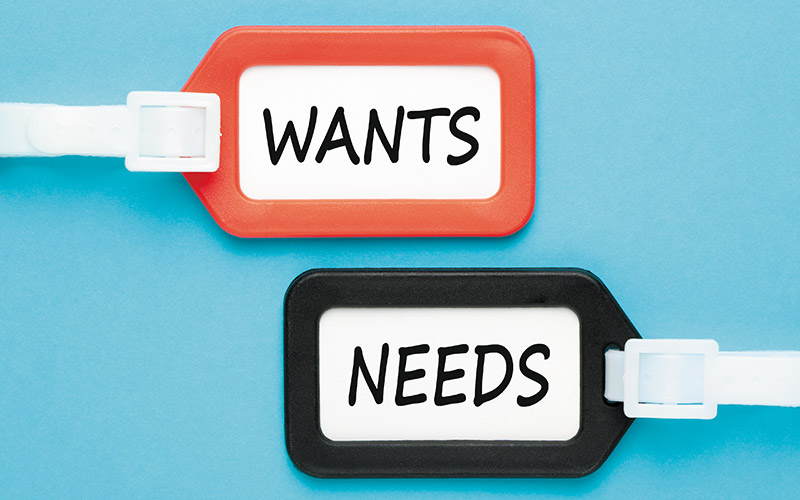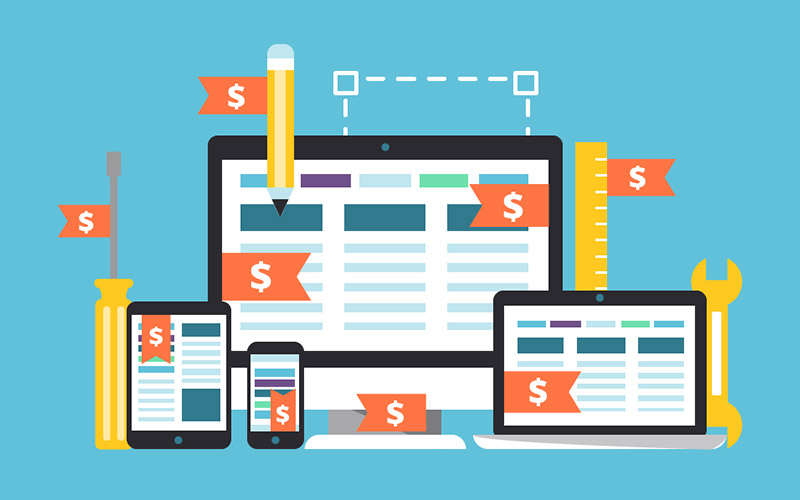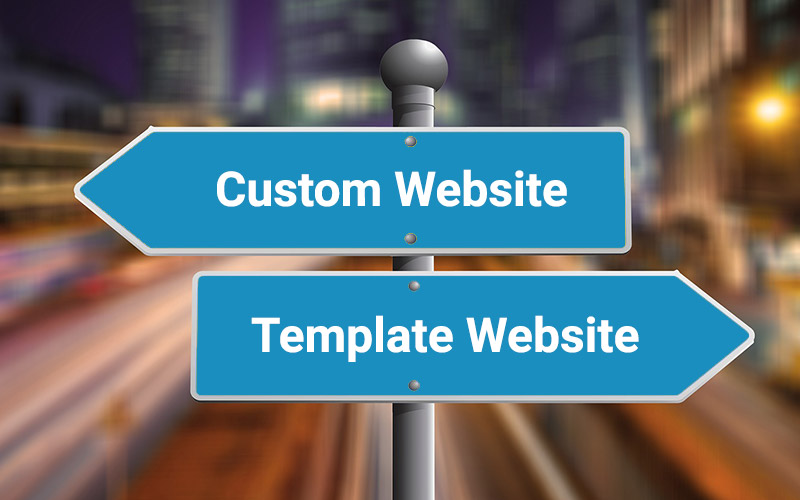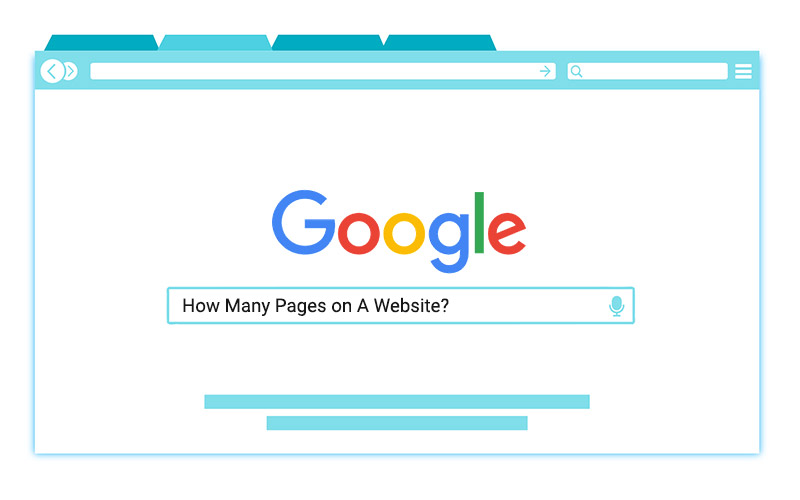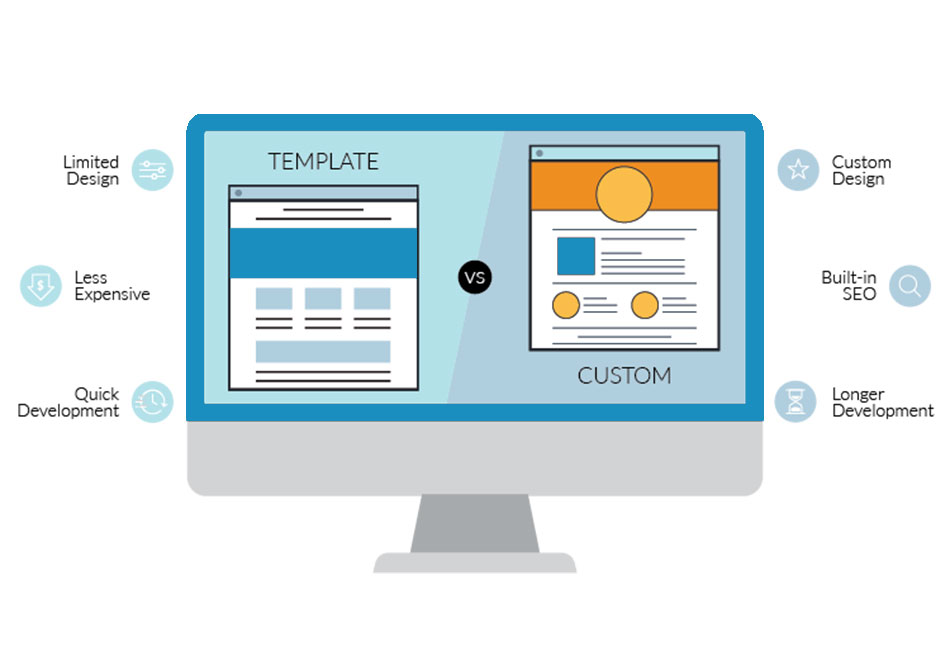
Difference Between Custom-built & Template Websites – Including WordPress
Today, having your own website is a must for personal and professional growth but there are many ways to build a website. Their chief difference is customisability, by which we can sort them in two categories:
- Custom built
- Template
The idea is that custom built websites take a lot of upfront work but provide a much stronger foundation for growth while template websites are easier to deploy but restrict growth. In realistic terms, you will most likely use something that is a mix of both.
In this article, we’ll focus on WordPress Content Management System (CMS), which combines the best of both categories, providing users with an optimised platform for deployment and growth.
Contents:
- Static HTML Websites
- Content Management System
- What is a Template Website?
- Template Website Pros
- Template Website Cons
- What is a Custom Built Website?
- Custom Built Website Pros
- Custom Built Website Cons
- Which is best for you – Custom or Template?
- Let us help you make the right choice
How Are Websites Made?
Building a website is a team effort that takes planning and organisation. All the work happens in the backend, whilst on the website’s frontend everything looks presentable and smooth.
What actually is the “back-end”? it’s a blank page where all the elements are placed for pages, and the coding happens while the “front-end” and is made out of jazzy elements, which can be code, images or other elements to spruce up the appearance, but essentially shows how the website presents on the internet. When you’re talking to someone in web development, ask them about their back-end and front-end skills.
To be successful, a website should strike a balance between the two and the website owner should aim for a team that can take care of both back-end and front-end. The team members would ideally have equal knowledge so different tasks can be done at the same time.
So, what happens if the website owner wants to tighten up the bundle or just add more to it? Not thinking long term is actually the Achilles’ heel of many website owners, who find themselves stuck and can’t do any upgrades without undoing and breaking the entire website.
Those owners are most often forced to pull everything apart, which means they might as well throw the entire thing in the dumpster and start from scratch. Before they build another website, they should do some reading to learn the difference between static HTML and CMS.
Fortunately, with Masters of Digital, everything is designed and implemented in a way where customers are able to make their own changes and additions without breaking anything.
Static HTML
Static HTML websites are by now (mostly) a relic of the past. They’re made using static code and do abide by universal web standards, which provides stability but also makes them difficult to update and makes them scale poorly. This means that success is actually what ruins these websites, as they can’t grow fast enough to meet increased traffic. Maintaining them is also a huge issue, and again, if you’re forced to hire new web designers as unless you know how to code, you won’t be able to make any changes yourself.
Static HTML websites aren’t mobile responsive so forget about viewing your website on a mobile phone or tablet.
Content Management System
Think of CMS as a content pipeline used to deliver whatever your users need while also giving you a possibility to handle updates and upgrades without breaking everything. As the name implies, it started off as a rigid control system but eventually also became a toolbox that lets you customise to your heart’s content.
Today, WordPress CMS provides optimal balance between stability and customisability that lets you tweak it as you wish. No matter how you fine-tune it, we recommend you keep compatibility in mind and avoid using solutions that are too rigid. With a skilled WordPress Developer there sky’s the limit with functionality and no customisation should be an issue.
Web Design encompasses many different skills and disciplines in the production and maintenance of websites. These areas include web graphic design, user interface design (UI Design), authoring, including standardised code and proprietary software, user experience design (UX Design), and search engine optimisation (SEO). – Wikipedia
What Is a Template Website?
A template website is basically a theme and design that is mostly already completed for you. All you have to do is fill in the blanks with your own information. There might be a pre-designed home page, about page, service page, and more. All you do is duplicate whichever page designs you need and upload your own content.
Templates can be generalised or very industry specific. For example, you will find some website templates that are marketed to be used for any local service industry. But you’ll also find templates specifically designed for plumbers, roofers, landscapers, etc.
It’s just a matter of looking around, testing out options, and finding the one that is best for your business, if you’re on a tight budget.
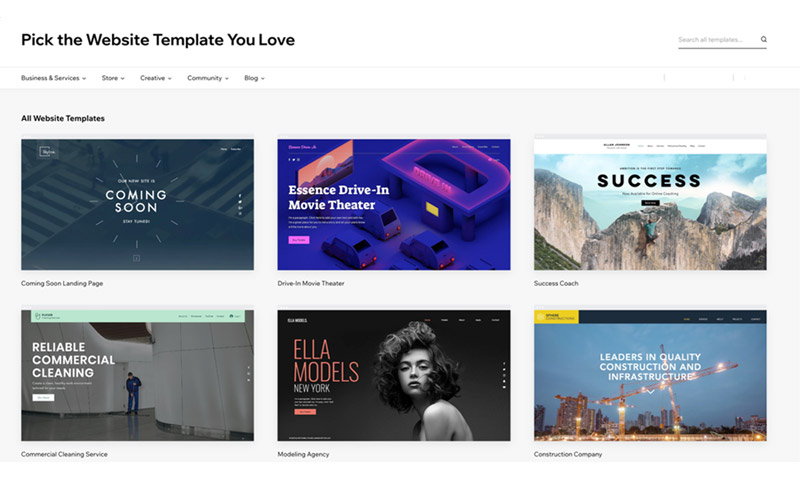
Image Source: Wix
Template Website Pros
Fast To Set Up. Need a website? Click-click and you’ve got your template up and running, just like that. That’s the power of template websites, which are all about instant deployment. The price is most often bargain-tier, letting you test out dozens of templates at a low cost and practically no risk.
Little Technical Knowledge Required. You don’t need much if any web development skill or programming experience either because it’s all ready-made. If you need a website that will work right now, template websites are by far the best solution, however keep in mind if you ever need to add anything extra, you will need to know how to match what’s already there so it all blends in.
Simple. If you have the perfect idea of what you want in a website and find a template that provides it, it could be an easy choice for you. Especially if you don’t expect a large spike in the throughput of users. The largest themes are also regularly updated and have an active community that provides support, which minimises your upkeep costs.
Template Website Cons
Rigid Design. The main con of using a one-off theme is the lack of customisability, meaning you might not find a template that suits you perfectly. Some templates are only relative to one industry, such as a plumber’s website theme or an online jewelry shop theme for example.
If you’re doing something novel, such as plumbing exclusively for jewelry stores, you’re out of luck. That’s actually a big problem with templates, since they don’t cater to lucrative niches with small user bases but high margins. Their features are most often baked in and rigid, which means you will have to find a workaround if you have a fresh take on the niche.
Developer Dependent. Another con is that you depend on the developer, who can decide to stop supporting the theme or might code things in such a way that it’s hard to find a workaround later on. Then you will feel the squeeze, since you’ll need to rebuild your whole website when that theme expires if it doesn’t support a newer version of WordPress updates. If you don’t rebuild your website, it will start falling apart and your users will move on.
In a sense, templates resurrect some issues from the static HTML era, where a simple update could break the whole site. In the long run, using templates alone pushes the upfront deployment cost to the future, where you’ll have to tear down and rebuild everything every couple of years.
Potential for Poor Performance. In templates, there are many default options and elements that might be slowing down your website. For example, various Javascript libraries are loaded on each page visit by default, even though less than 1% of visits might be using them. This ultimately results in poor performance, bad user experience and a damaged SEO score as well.
There is also the security concern, where some elements or plugins in the template might have buggy, malicious or just messy code. Our advice is to always check out the developer and see if they’re working in a transparent manner, such as by providing a changelog with the list of features and changes.
Few other factors to always keep in mind when choosing a Template website, is price & company. If it seems to be too good to be true, it most likely is. Here’s some reviews for a company that builds template websites. It’s always a good peace of mind looking at reviews before going ahead with any company. Here’s our reviews for instance.
Do Designers Use Templates?
Designers may use templates but are not bound by them; it all depends on the client’s wishes. This gives them unprecedented flexibility but also a quick turnaround when needed. There is no universal answer to any dilemma and a fine designer will adapt to the situation to give you the best long-term solution.
At Masters of Digital, we do build template websites. But we never rely on rigid pre-purchased designs. Instead, we use multi-purpose WordPress themes which are much more customisable and avoid many of the typical problems associated with templates.
What Is a Custom Built Website?
A custom built website is like a bespoke suit — it’s tailored to fit and move with the owner, though it does cost more and requires some patience. You can build a custom website in a myriad of ways but there are two categories of custom websites for WordPress:
- A complete custom theme that is designed and coded from scratch
- Custom-designed websites that are built from responsive multi-purpose WordPress themes such as Divi or Total
The first category lets you define every detail, including the programming language used in the theme. This can be useful if you have long-term plans that involve a specific language, but going overboard may cause compatibility issues later on.
The second category is a mix of template and custom website building. Of course, the team will do a wireframe and a concept before building the website to ensure the design meets or exceeds the client’s expectations.
Custom Built Website Pros
- Complete Control. Custom website building is the closest we have to digital sorcery. You can create whatever you want, which includes plugins and elements that meet your audience’s unique needs.Highly Brandable. You can easily deploy your own branding, down to specific fonts, colour combinations and logos wherever you want them. Consistency is the key here, as you can have a website that is thoroughly designed around your brand and that grows with your brand’s reach. Therefore, custom built websites already provide some elements of marketing but also deal with SEO.Optimised Backend. Custom websites let you shake off all the useless code, plugins and elements, allowing you an exquisite performance. Your website loads only what you need and what you want it to. This already puts you in front of the competition, at least when it comes to performance, user experience and SEO. Long Term Reliability. Multi-purpose WordPress themes are in our opinion the best way to build a digital world, letting you design anything you like, provided it’s a well-built multi-theme. These multi-themes are built and supported by larger developers and can be used in any industry, which gives the customer peace of mind knowing that the developer will be around for many years to support the theme.Two examples of such well-built WordPress multi-themes are Divi and Total, which are what Masters of Digital rely on for our most important web design projects.
- Divi offers drag and drop website building with true visual editing that allows for real-time design and editing alongside custom CSS control. Divi has been publishing updates since the initial release in 2013, with more info on that here.
- Total is an SEO-friendly, cross-browser theme that fully supports translations into other languages and eCommerce plugins, such as WooCommerce. Total has been publishing updates since the initial release in December 2013, with more info on that here.
Whenever you’re choosing a provider of digital services or products or just a web design team, research their history and you’ll be able to gauge their long-term prospect. Beware of flashy, quirky services, products and teams that fizzle out and fall apart.
Custom Built Website Cons
Cost. The two biggest cons of a fully custom-designed theme/template are time and money spent precisely defining everything before the first line of code is written. Not only is there a high upfront cost but also a lot of upkeep, especially if you have many custom elements.
Complexity. By their very nature, custom websites are more complex to design and develop. This means that there is just more room for error, especially if you are hiring a fly-by-night freelancer or even an agency without the right set of skills and experience. Masters of Digital has been producing custom websites for years, and we have a long list of happy clients to testify to our track record.
Lack of Compatibility. Sometimes, a design is so custom that it doesn’t play well with other plugins or elements that you need to add down the line. Some fully custom themes can lock you into a single developer, and when you want to use plugins or advanced functions, the theme may not support it. As long as you have a good developer, though, this shouldn’t be an issue.
Long Term Planning. In our opinion, custom websites require that you plan several years ahead, project your growth to that point and build for that kind of traffic. You are designing a site today that will work with your customers five years from now, so you’ve got to put some foresight into the project to get it right the first time around.
Which Is Best For You — Custom or Template?
Both custom built and template websites have their merits and you can find free or bargain-level offers to tinker within either category. What we suggest is that you think about your needs and get in touch with a design team to talk about your ideas, such as calling us on 0423 807 424.
We do offer both custom and template website building services, however we don’t use one-off pre-purchased templates that are restrictive and difficult to customise. We only use well-supported customisable multi themes with a long track record, such as the Total WordPress theme.
We think the ideal website is the one that fulfills your expectations and provides you and your visitors with a stable environment. Here are some of the factors to consider:
Your Needs
Multi-purpose WordPress themes are the best of both worlds. Being a multi-theme, you can generally design anything you like, provided it’s a well-built multi-theme. Multi-themes are built and supported by larger developers and can be used in any industry, which gives the customer security knowing that the developer will be around for many years to support the theme.
Our advice would be to have your own design team, who will be able to provide quick deployment and regular maintenance of your website.
Your Budget
Template websites start around $1,500 and full custom projects can be anywhere between $5,000-100,000. Of course, if you have a larger budget, the sky’s the limit.
There are many WordPress themes that are in the sub-$100 range, which is great for experimentation. You can find free options as well, but count on plenty of people already using them, which might make your website look way too generic. If you want to stand out, you will either have to sink in effort or money, but most realistically both.
Your Timeframe
More time lets us stress-test and fine-tune the website more, especially if you have custom elements that might become a snag when interacting with other software. If you’re in a rush, go for the template. Template sites can usually be live in a matter of weeks (provided you have the content already).
Your Plans For Growth
As a company grows, they want to meet their audience’s needs in more and more unique ways. A custom website lets you do this far better than a template site ever can. If you have plans in the next several years to branch out into new service regions, up your marketing game, and seriously grow your user engagement, a custom site may be the best choice for you.
Let Masters of Digital Help You Make The Right Choice
Having your own website is a tremendous opportunity for personal and professional growth. Developing it isn’t easy but you shouldn’t be making it harder for no reason.
If your needs are simple, choose a template. If you are going for unique, choose custom-built.
In either case, get in touch with us and let’s discuss your business needs.
Considering a new Website? Complete the below form to discuss your project and get a free quote from your local Australian website designer.

